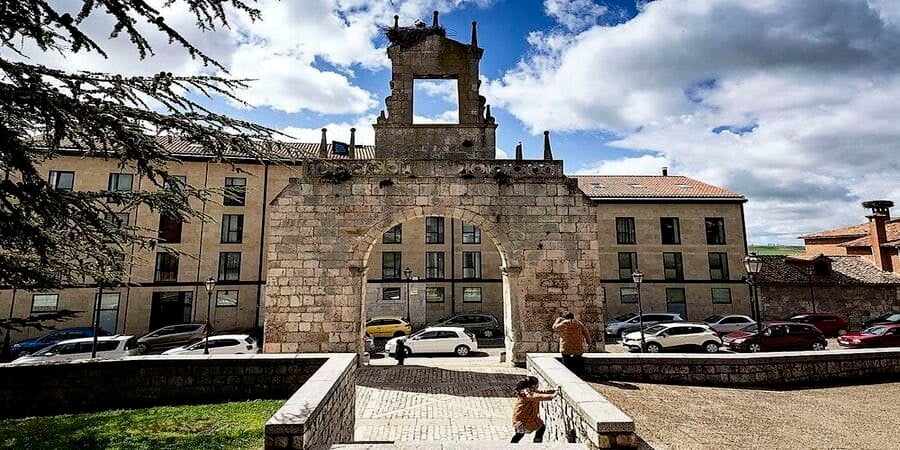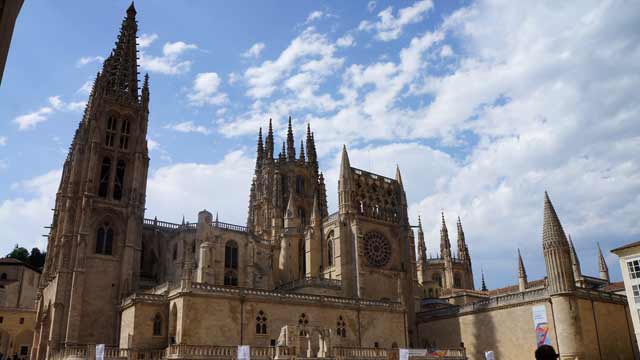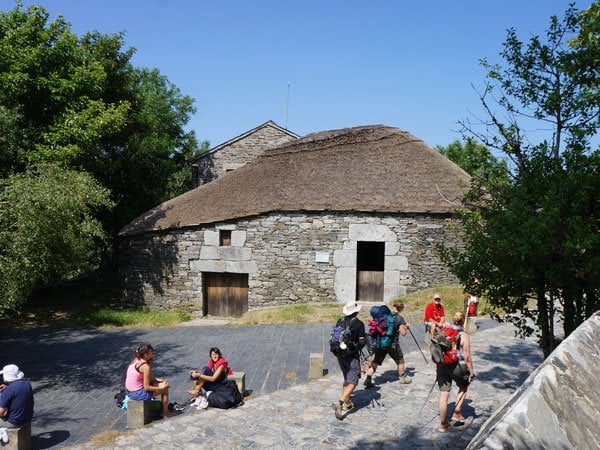Burgos is a historic city on the Camino Francés, at the edge of Spain’s central plateau. It is the capital of Burgos Province, within the autonomous community of Castile and León. This city serves as a major crossroads for northern Spain and the Camino de Santiago, with the pilgrimage route running through the heart of the city alongside the Arlanzón River.
Starting or Ending Your Camino in Burgos
Burgos offers flexibility for pilgrims. You can begin your journey by walking or cycling the full Camino Francés, tailoring your starting point using our Camino planner. Alternatively, you may finish your Camino here, allowing you more time to explore the city’s rich history. For those interested, a popular route is to walk the Camino Francés from Logroño to Burgos over one week.
Exploring the Historical Landmarks of Burgos
It is renowned for its diverse and historic landmarks. The most prominent is the Cathedral of Burgos, a UNESCO World Heritage Site. Other significant sites include:
- Las Huelgas Reales Monastery: A stunning royal monastery with a rich history.
- Cartuja of Miraflores: A peaceful monastery known for its Gothic architecture.

In addition to these landmarks, it is home to many ancient churches and convents. Notable architectural structures include:
- Santa María Gateway: An impressive city gate built for Emperor Charles V’s first entrance.
- Arch of Fernán González: Another notable structure that adds to the city’s historic charm.

The Famous Cuisine of Burgos
Burgos is known for its unique and delicious cuisine. The most famous local product is Queso de Burgos, a soft, buttery white cheese that can be preserved for up to 10 days without curing.
Another iconic dish is Morcilla de Burgos, a pig’s blood sausage popular across the Iberian Peninsula. Cooks spice it with onions and herbs, using rice as a key ingredient to give it a lighter texture. Local tradition dictates that Morcilla should be “salty, smooth, and piquant.”
People commonly enjoy these local products such as tapas, slicing them, and serving them on baguette bread. They are popular snacks throughout Spain and often pair them with drinks.

Climate of Burgos
Burgos enjoys a moderate climate, making it an ideal place to start or finish your Camino. Summers are pleasantly warm, and winters are refreshingly cool. This comfortable climate enhances the experience for pilgrims, whether they are beginning their journey or celebrating its completion in this historic city.
The city is rich in history, culture, and culinary delights, making it a significant stop on the Camino Francés. Whether you start or end your journey here, it offers an unforgettable experience for all pilgrims.
Feel free to contact us for more information on the Camino Francés or other routes of the Camino de Santiago. We are here to help you plan your perfect pilgrimage.






Looking forward to learning more if the Camino Frances